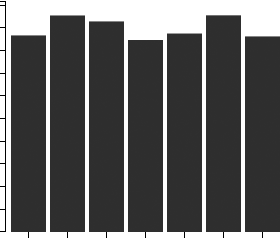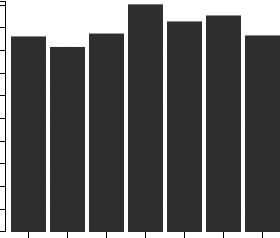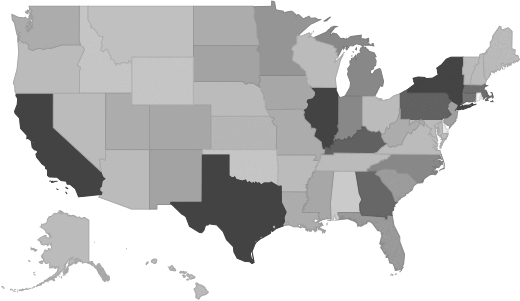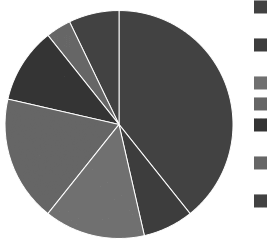Business, Professional, Labor & Political Organizations Industry - Market Research Report
Industry Overview
This industry group comprises establishments primarily engaged in promoting the interests of their members (except religious organizations, social advocacy organizations, and civic and social organizations). Examples of establishments in this industry are business associations, professional organizations, labor unions, and political organizations.
Source: U.S. Census BureauMarket Size and Industry Forecast
This research report analyzes the market size and trends in the Business, Professional, Labor and Political Organizations industry. It shows overall market size from 2020 to the present, and predicts industry growth through 2030. Revenues data include both public and private companies.
| Historical | Forecasted |
|---|
| 2020 | 2021 | 2022 | 2023 | 2024 | 2025 | 2026 | 2027 | 2028 | 2029 | 2030 |
|---|
| Market Size (Total Revenue) | Included in Report |
| % Growth Rate |
| Number of Companies |
| Total Employees |
| Average Revenue per Company |
| Average Employees per Company |
Source: U.S. government financial dataIndustry Revenue ($ Billions)

Industry Forecast ($ Billions)

Advanced econometric models forecast five years of industry growth based on short- and long-term trend analysis. Market size includes revenue generated from all products and services sold within the industry.
Geographic Breakdown by U.S. State
Market size by state reveals local opportunity through the number of companies located in the region. Each state's growth rate is affected by regional economic conditions. Data by state can be used to pinpoint profitable and nonprofitable locations for Business, Professional, Labor & Political Organizations companies in the United States.
Business, Professional, Labor & Political Organizations Revenue by State

Distribution by Company Size
| Company Size | All Industries | Business, Professional, Labor & Political Organizations |
|---|
| Small Business (< 5 Employees) | Included |
| Small Business (5 - 20) |
| Midsized Business (20 - 100) |
| Large Business (100 - 500) |
| Enterprise (> 500) |
Business, Professional, Labor & Political Organizations Industry Income Statement (Average Financial Metrics)
Financial statement analysis determines averages for the following industry forces:
- Cost of goods sold
- Compensation of officers
- Salaries and wages
- Employee benefit programs
- Rent paid
- Advertising and marketing budgets
The report includes a traditional income statement from an "average" company (both public and private companies are included).
| Industry Average | Percent of Sales |
|---|
| Total Revenue | Included |
| Operating Revenue |
| Cost of Goods Sold (COGS) |
| Gross Profit |
| Operating Expenses |
| Operating Income |
| Non-Operating Income |
| Earnings Before Interest and Taxes (EBIT) |
| Interest Expense |
| Earnings Before Taxes |
| Income Tax |
| Net Profit |
Average Income Statement

Cost of Goods Sold
Salaries, Wages, and Benefits
Rent
Advertising
Depreciation and Amortization
Officer Compensation
Net Income
Financial Ratio Analysis
Financial ratios allow a company's performance to be compared against that of its peers.
| Financial Ratio | Industry Average |
|---|
| Profitability Ratios | Included |
| Profit Margin |
| ROE |
| ROA |
| Liquidity Ratios |
| Current Ratio |
| Quick Ratio |
| Activity Ratios |
| Average Collection Period |
| Asset Turnover Ratio |
| Receivables Turnover Ratio |
| Inventory Conversion Ratio |
Products and Services Mix
Product lines and services in the Business, Professional, Labor & Political Organizations industry accounting for the largest revenue sources.
| Product Description | Description | Revenue
($ Millions) |
|---|
| Industry total | Included |
| Membership services |
| Condominium & homeowners' association assessments |
| Organizing seminars, conferences, trade shows, & other events |
| All other revenue |
| All other operating receipts |
| Contributions, gifts, & grants - private |
| Contributions, gifts, & grants - government |
| Licensing of rights to use intellectual property |
| Training services, membership organization activities |
Salary information for employees working in the Business, Professional, Labor & Political Organizations industry.
| Title | Percent of Workforce | Bottom Quartile | Average (Median) Salary | Upper Quartile |
|---|
| Management Occupations | 14% | Included |
| Top Executives | 6% |
| Chief Executives | 1% |
| General and Operations Managers | 6% |
| General and Operations Managers | 6% |
| Business and Financial Operations Occupations | 29% |
| Business Operations Specialists | 27% |
| Human Resources Workers | 16% |
| Labor Relations Specialists | 15% |
| Arts, Design, Entertainment, Sports, and Media Occupations | 7% |
| Media and Communication Workers | 6% |
| Office and Administrative Support Occupations | 25% |
| Secretaries and Administrative Assistants | 9% |
| Secretaries and Administrative Assistants | 9% |
| Secretaries and Administrative Assistants, Except Legal, Medical, and Executive | 7% |
| Other Office and Administrative Support Workers | 6% |
| Office Clerks, General | 5% |
| Office Clerks, General | 5% |
Government Contracts
The federal government spent an annual total of
$68,215,375 on the business, professional, labor & political organizations industry. It has awarded 1,909 contracts to 621 companies, with an average value of $109,848 per company.
Top Companies in Business, Professional, Labor & Political Organizations and Adjacent Industries
| Company | Address | Revenue
($ Millions) |
|---|
Included |



